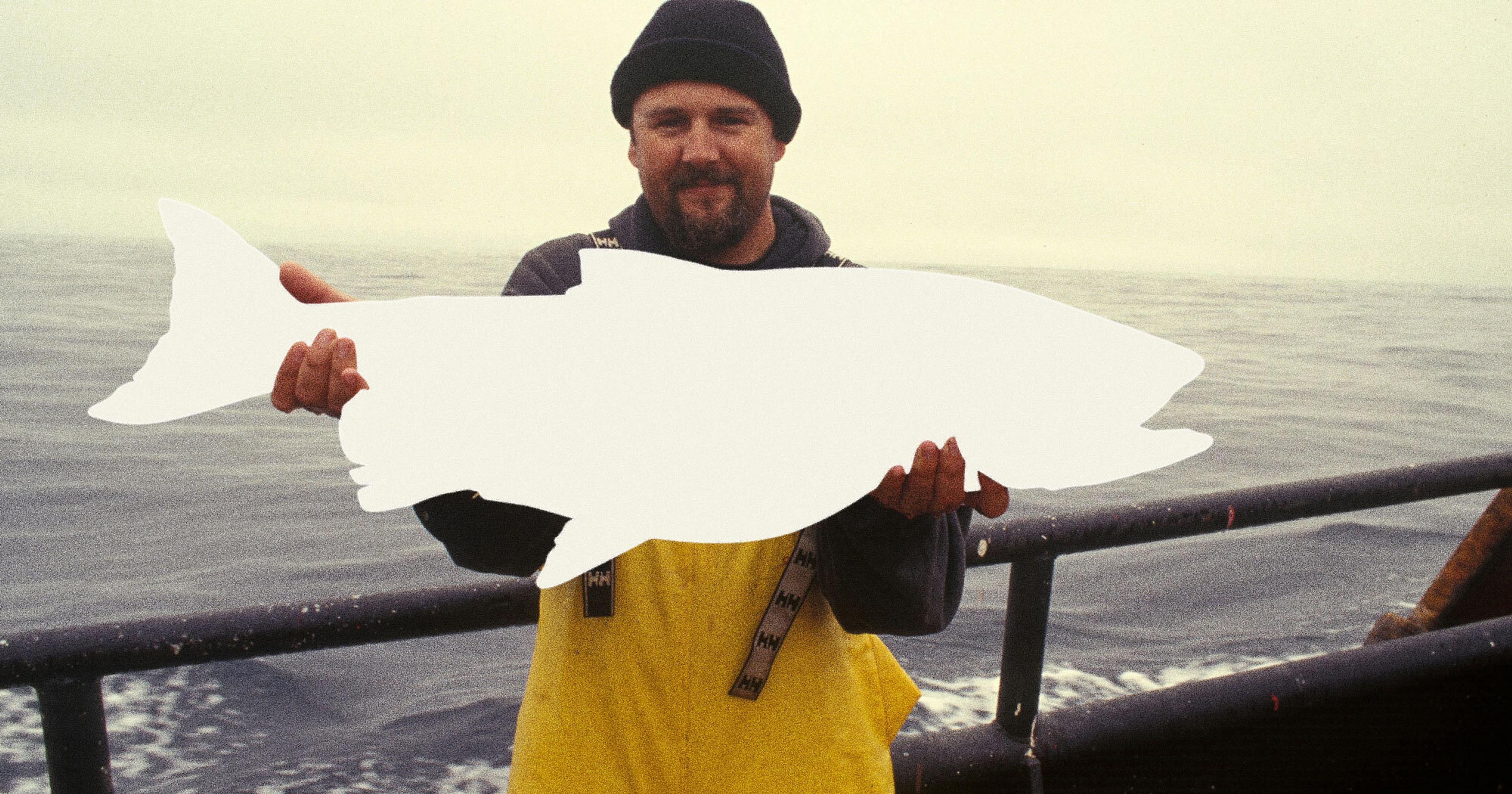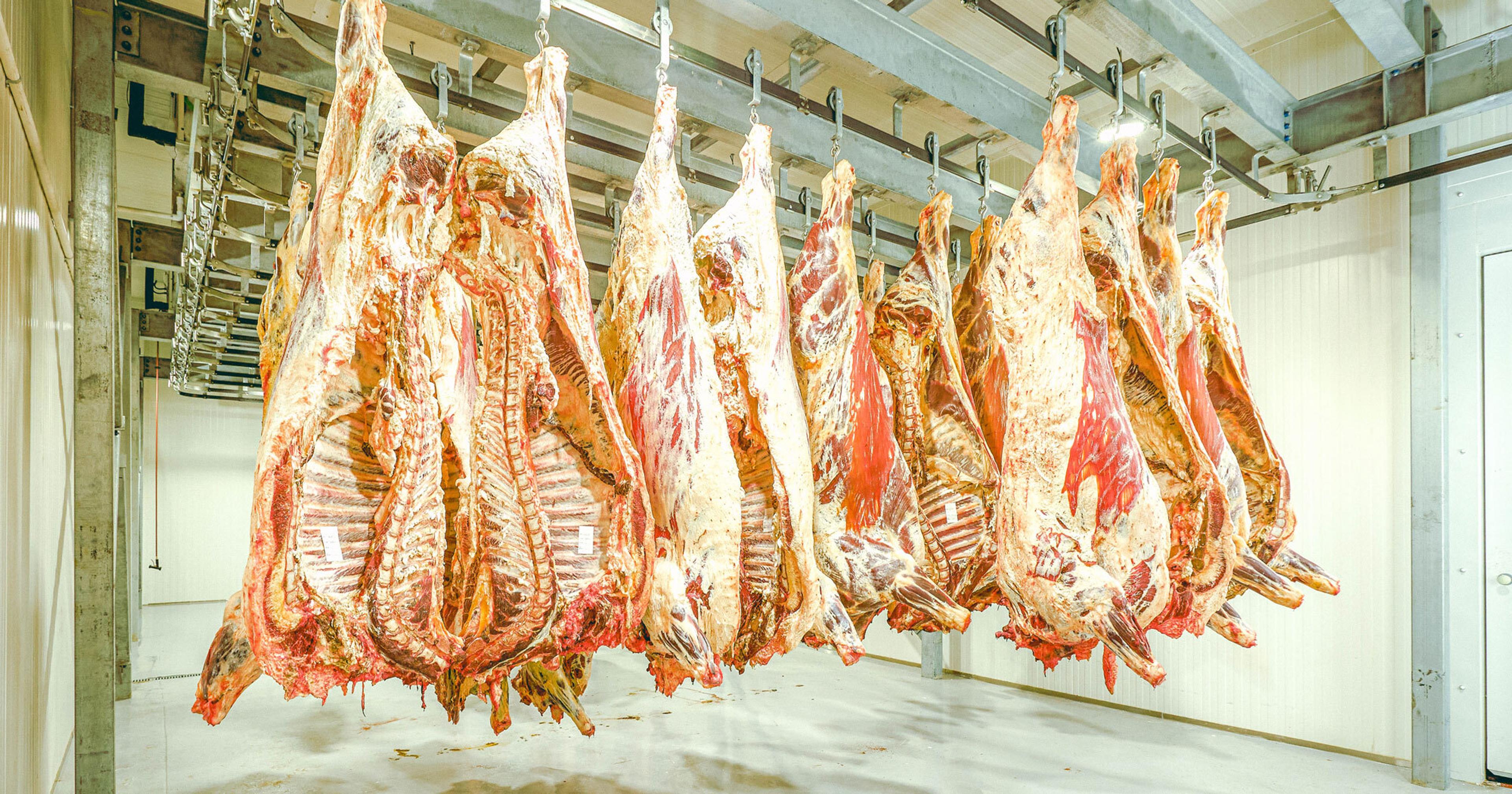Tinned fish is as hot as ever in the U.S. So why aren’t we making it ourselves?
Sometime around 2015, Keper Connell had an epiphany while on vacation in Barcelona. He had long worked as a commercial fisherman, doing all kinds of fishing jobs throughout the seasons. “But most of that was just so I could keep catching bluefin tuna,” he said. He loved the challenge, heading out to the Gulf of Maine from his home in New Hampshire with just rod and reel. Those expeditions were, as he puts it, “entirely enjoyable.” But profitable? Not so much.
In Spain, though, Connell learned that bluefin tuna was a prized food fish — caught every summer the same way it had been for millennia, much of it packed in olive oil and tinned to enjoy year round. “I thought, ‘Wow, I’m catching these same fish. How come I can’t put this in the tin back home?’ It was in the back of my mind for many years,” Connell said. He continued catching tuna on slim margins — “not really making any money but knowing full well that, up the chain, they’re making plenty” on the wholesaler or restaurateur side — and eventually decided to do the value add himself. He founded Gulf of Maine Conservas in 2019.
It was a good time: Tinned fish was becoming a much-discussed food world darling, and the U.S. market would go on to grow steadily over the next several years. “Americans started to realize this is a healthy source of protein and all these other nutrients,” said Anna Hezel, author of the 2023 tinned fish cookbook Tin to Table, who first started noticing the trend bubbling up in the early 2010s.
American consumers also realized that the cheap, water-packed albacore they grew up with was not their only option. Cans of high-quality fish from Portugal and Spain, where tinned fish (or conservas) is a longstanding tradition, came back in suitcases as souvenirs and appeared in greater numbers on grocery shelves. Wine bar menus began filling with cockles, razor clams, and whole baby squid, packed in olive oil and sometimes flavored with ingredients like garlic or chile. At some point, tinned fish became a poster child of affordable luxury, declared online to be the new “hot girl food.”
Still, when it comes to traceable, carefully processed, beautifully packaged tinned fish, companies like Gulf of Maine Conservas are relatively rare. Other U.S. brands have sprung up, too — but look at the tin and you’re likely to see the fish inside was caught and processed in Europe as a private-label product, then shipped thousands of miles. As the global tinned-fish market continues to grow, expected by some estimates to nearly double in the next decade, there are a lot of reasons to start asking: Why don’t we make more of it here?
*
There are reasons to love tinned fish that aren’t just TikTok fodder. For one thing, it can be a highly sustainable seafood choice, often using smaller species that are wild-caught and less prone to overfishing. Preserving reduces waste and requires less energy for storage and transport. It also means that a seasonal catch can be sold year-round, creating new and more reliable markets for fishers. Especially amid global trade uncertainty — and the threat of a 20 percent blanket tariff on imports from the European Union — there might be an opening to keep some production local.
“I think a lot of American companies are asking the same question: We have fish here, we have canneries here, why can’t we do what they’re doing [in Europe]?” Hezel said. “One of the main reasons is probably just species availability.” Some fish emblematic of Iberian conservas are not so easy to come by on this side of the Atlantic. Our native anchovy, for example, is harvested mostly as bait fish, and the Pacific sardine fishery has been closed since 2015 due to overfishing.
Other conservas classics are available domestically, like mackerel, which Connell sources locally to complement the bluefin he mostly catches himself. But Gulf of Maine Conservas also offers tins of something slightly more unusual: smoked eel from the region’s American eel elver fishery, which are caught as juveniles and raised in a recirculating aquaculture system at American Unagi in Waldoboro, Maine.
“I think a lot of American companies are asking the same question: We have fish here, we have canneries here, why can’t we do what they’re doing [in Europe]?”
Connell is not alone in giving the conservas treatment to American fish that customers might not be used to seeing in tins (or eating at all). In Oregon, chef Sara Hauman’s Tiny Fish Co. makes Pacific Northwest conservas with species like sole, rockfish, or geoduck. Wildfish Cannery, a brand that grew out of a community salmon cannery in Alaska, gives some of its tinned salmon a Mediterranean twist and packs seafood like lingcod or Giant Pacific octopus in high-quality olive oil.
For Marissa Fellows, founder of Michigan-based Great Lakes Tinned Fish, the conservas trend has provided a new way to support fishers and culinary traditions in her home state. Fish is big business in the region — the industry is valued at about $7 billion — and is embedded in the culture of life on the water. Still, around 90 percent of seafood sold in Michigan is imported. As far as Fellows knows, hers is the only company of its kind that sources fish exclusively from the Great Lakes.
One of the most popular native species in the region is lake whitefish, which Fellows said is synonymous with summer: “People have family whitefish dip recipes that they eat at their cottages. It’s this super idyllic, quintessentially Midwestern thing.” Her tins of cold-smoked whitefish have found an audience among tinned fish skeptics and aficionados alike. “There’s a little bit of local pride that comes with that,” she added — “to show people what the Midwest and the Great Lakes are all about.”
Still, despite her best efforts, it was more or less impossible to keep the whole supply chain entirely regional: “There’s no fish cannery in the Midwest,” Fellows explained.
*
As basic as it is, one huge hurdle to domestic tinned fish production is a lack of infrastructure. There simply aren’t very many canneries. “In Spain and Portugal, a lot of the companies that still exist are canneries that were started by families a hundred years or more,” Hezel noted — but thanks to consolidation and changing consumer tastes, many coastal U.S. states don’t have an operating seafood cannery at all. And building one from scratch tends to be a prohibitively expensive proposition.
It wasn’t always this way, but the historical seafood processing model was not necessarily built with longevity in mind. “Just like lumberyards, [canneries are] built on a resource site,” Connell explained. Take Cannery Row, of Steinbeck fame: Northern California and the Central Coast were long centers for the sardine industry, but when the stock crashed in the mid-20th century, the canneries shuttered. Connell said the situation in Maine is similar; when herring stock collapsed in the 1970s, the canneries eventually moved, closed, or were bought up. In late 2024, the last remaining cannery in the state announced that it would be relocating to Delaware.
Though Connell catches or sources all of his seafood from the Gulf of Maine, he has found that the best option for canning is across the country in Coos Bay, Oregon. “The Pacific Northwest is really the only guiding light at this point,” he said. A group of canneries that popped up around the region’s Albacore fishery about 50 years ago is still going strong, serving many of the country’s domestic conservas brands.
In light of the tinned fish renaissance, some in that area are expanding. Western Washington’s iconic Taylor Shellfish, for example, got into the canning business recently, about a century after the Taylors first started farming oysters in South Puget Sound. Wes Taylor, a fifth-generation employee, explained that it started with a small deal between neighbors: The owners of a local oyster operation called Ekone were looking to retire and approached Taylor Shellfish to look after their business, including the small cannery and smokehouse they’d built by their tidelands on Willapa Bay.
Another sign of a potential groundswell: The East Coast recently saw the opening of its first new cannery in more than 80 years. Island Creek Oysters began operations at its new facility in the seafood capital of New Bedford, Massachusetts, in June 2024. One hope is that the cannery will provide a more consistent market for local shellfish farms; Island Creek buys from more than 100 of them for its tinned fish line, which also includes products from a co-packer in Spain.
“I’ve been met with a lot of sheer enthusiasm. Doors are opening left and right.”
Aside from the infrastructure challenges, some amount of consumer education and market-building is likely still ahead if U.S. conservas are to really thrive. This could include increasing awareness of local species, tying this style of seafood into the locavore movement, and emphasizing all the ways that tinned fish, already a sustainable choice, can be made even more so while celebrating seafood biodiversity. Fellows noted that chefs can be an asset in introducing these products to new audiences. “I’ve been met with a lot of sheer enthusiasm,” she said of her deepening ties in the Michigan restaurant industry. “Doors are opening left and right.”
But paying fairly, producing on a small scale, and keeping the supply chain close to home — that all adds up, and the pricing of brands like these can be another hurdle. Transparency about why these tins cost much more than the cents people might used to be paying for an inferior product is important. So is a certain degree of smart branding, which has helped companies like Fishwife — which mostly imports its fish but processes some of it at a cannery on the West Coast — achieve massive success. Hezel is confident that the “get what you pay for” mindset that conscious consumers bring to other foods can be leveraged to recast domestic conservas as something to be coveted: “I think there is opportunity for American companies to build products that have the same amount of cultural currency.”
In the end, Connell said, it’s a rising-tide situation — the more companies, canneries, and customers, the better. “Is this really a substantial industry? Can it be bolstered? I think it can. And the closer you get to the consumer’s mouth, the easier it is.” Connell also noted that objections to the price tag tend to arise only before someone has actually tasted the fish in the tin. “My only response is, ‘Please try it,’” he said, “and it’s quickly overcome.”










